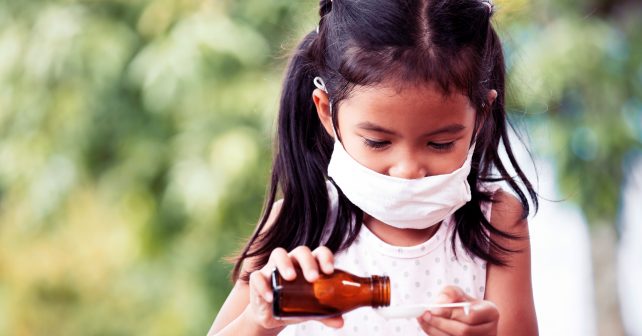
The best questions often stem from the inquisitive learner. As educators, we love, and are always humbled by, those moments when we get to say, “I don’t know.” For some of these questions, you may already know the answers. For others, you may never have thought to ask the question. For all, questions, comments, concerns, and critiques are encouraged. Welcome to the Kids Korner.
Explore This Issue
ACEP Now: Vol 39 – No 11 – November 2020Question 1: In children with group A strep pharyngitis, what benefit(s) does antibiotic treatment offer?
While a potentially reasonable argument may be made about deferring antibiotic treatment of GAS-positive pharyngitis, is antibiotic treatment beneficial? To begin, an earlier RCT by Nelson evaluated 35 children ages 5–11 years with GAS confirmed by culture and randomized patients to penicillin (PCN) treatment or placebo.1 Follow-up visits occurred at 48 hours. Patients treated with PCN had a significantly shorter duration of fever at follow-up, with 28 percent of placebo patients having persistent fever >48 hours but no treated patients having persistent fever (P=0.031). At 48-hour follow-up, children receiving PCN also had significantly shortened times until improved (P=0.008) and until well (P=0.022). A similar shortened duration of fever at 48 hours was seen in another RCT by Pichichero et al.2
A Cochrane meta-analysis by Spinks et al evaluated 27 trials with 12,835 total cases.3 This included both adults and children and included patients with the diagnosis of sore throat, not specifically GAS. Regarding antibiotics versus placebo, the risk ratio of the incidence of developing the secondary complication of otitis media within 14 days following GAS pharyngitis antibiotic treatment was 0.30 (95 percent CI, 0.15–0.58; 11 studies), suggesting that antibiotic therapy decreased the incidence of the complication of otitis media. Similarly, the risk ratio of the incidence of developing “quinsy”—meaning peritonsillar abscess or retropharyngeal abscess—within two months following GAS antibiotic treatment was 0.15 (95 percent CI, 0.05–0.47; eight studies).
Lastly, the risk ratio of the incidence of developing acute rheumatic fever (ARF) within two months was 0.27 (95 percent CI, 0.1–0.50; 14 studies). While ARF is traditionally rare in Western countries (<1/100,000 children) when compared with developing countries (approximately 50/100,000 children) and many cases were reported before 1975, some more recent studies have demonstrated increased incidences of ARF up to 23–27/100,000.4,5 This suggests that ARF does still exist in higher-income countries as well as developing countries.
Conclusion
Antibiotic treatment for GAS-positive pharyngitis does demonstrate some benefits compared with placebo, and studies suggest that antibiotic treatment shortens some symptoms, including fever, and decreases the risk of developing secondary complications.
References
- Nelson JD. The effect of penicillin therapy on the symptoms and signs of streptococcal pharyngitis. Pediatr Infect Dis. 1984;3(1):10-13.
- Pichichero ME, Disney FA, Talpey WB, et al. Adverse and beneficial effects of immediate treatment of Group A beta-hemolytic streptococcal pharyngitis with penicillin. Pediatr Infect Dis J. 1987;6(7):635-643.
- Spinks A, Glasziou PP, Del Mar CB. Antibiotics for sore throat. Cochrane Database Syst Rev. 2013; 2013(11):CD000023.
- Pastore S, De Cunto A, Benettoni A, et al. The resurgence of rheumatic fever in a developed country area: the role of echocardiography. Rheumatology (Oxford). 2011;50(2):396-400.
- Fabi M, Calicchia M, Miniaci A, et al. Carditis in acute rheumatic fever in a high-income and moderate-risk country. J Pediatr. 2019;215:187-191.
Pages: 1 2 | Multi-Page







No Responses to “In Kids with Group A Strep, What Benefit(s) Do Antibiotics Offer?”